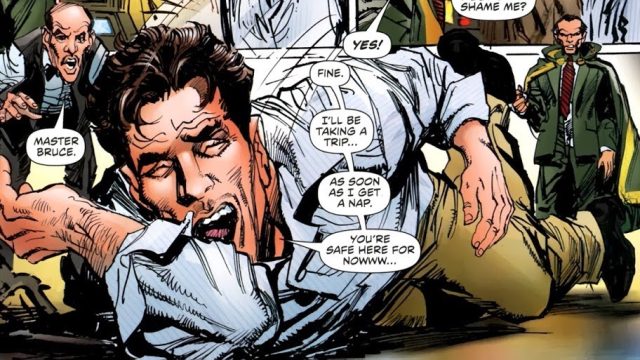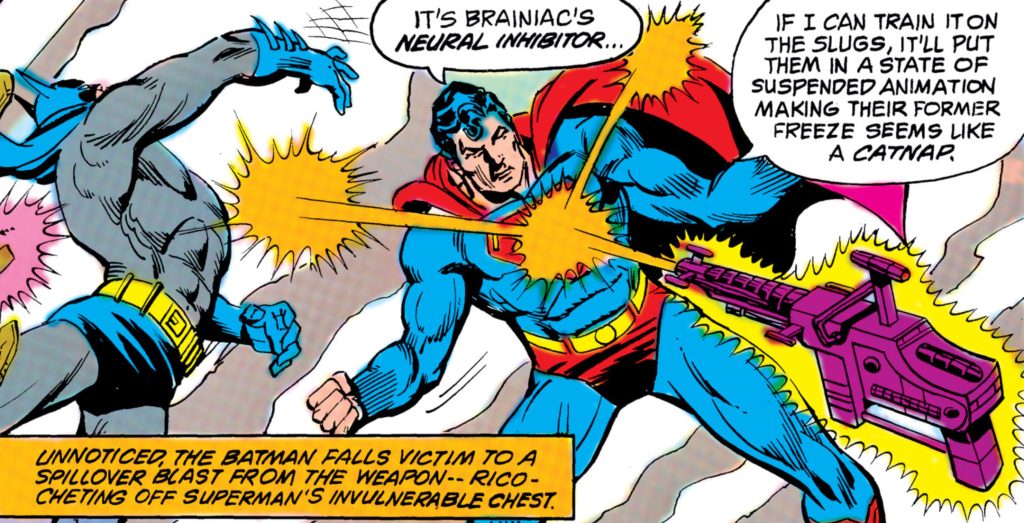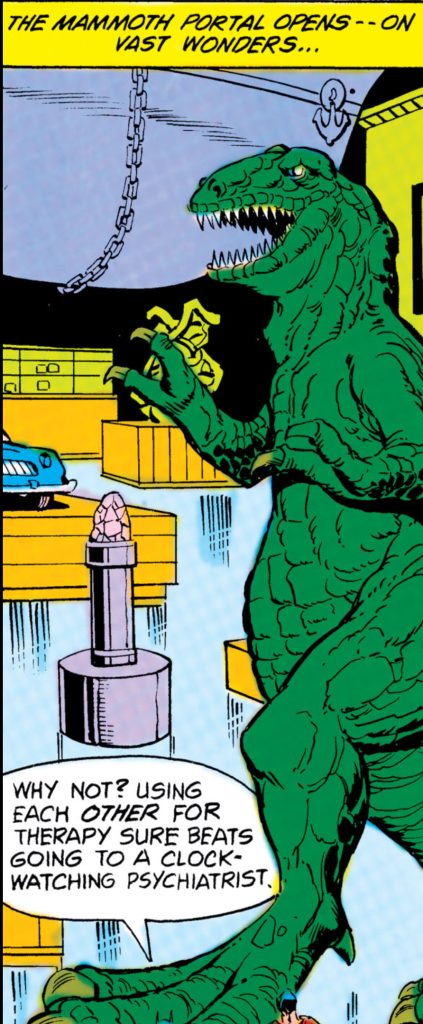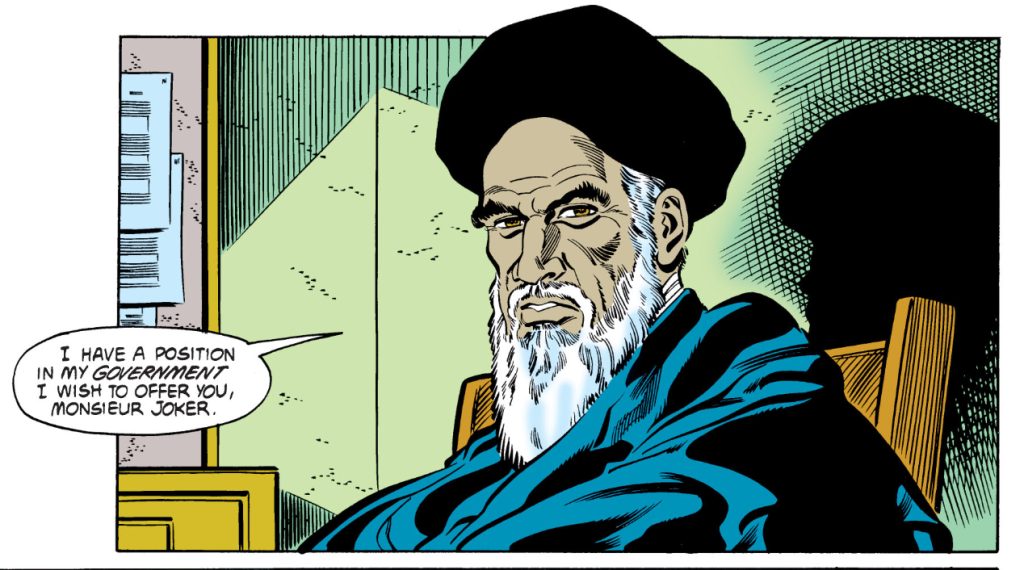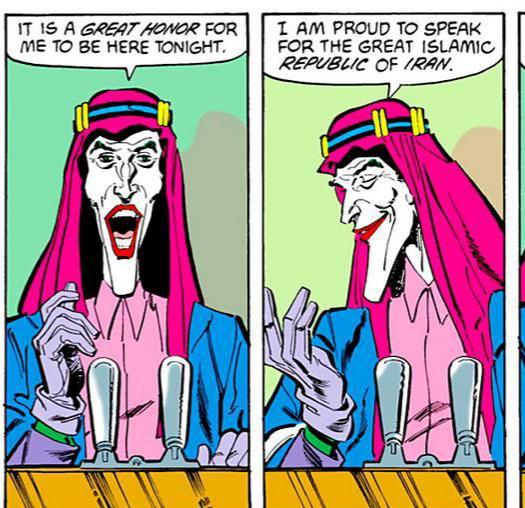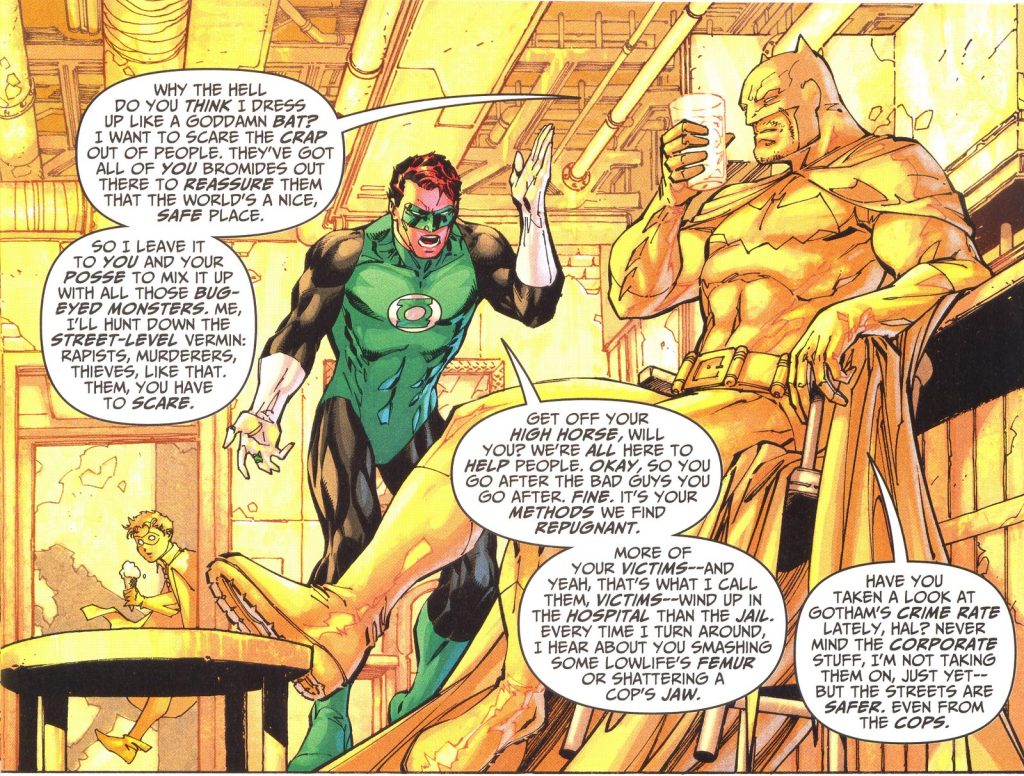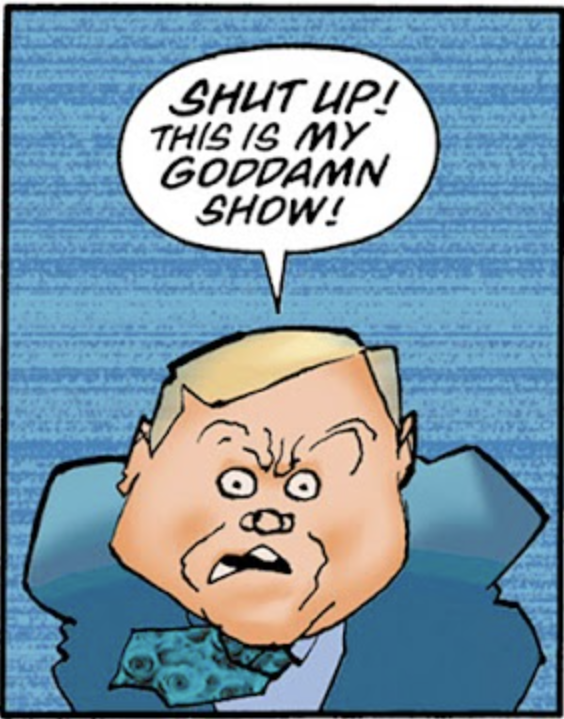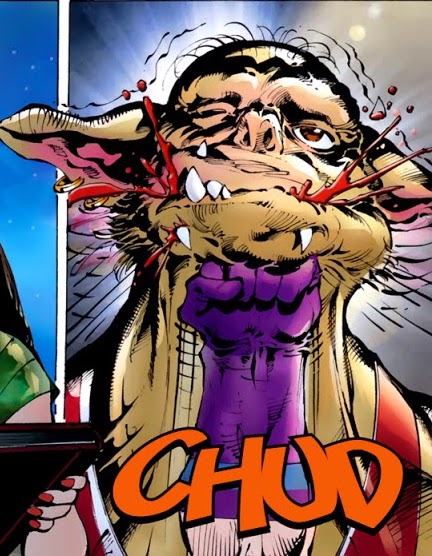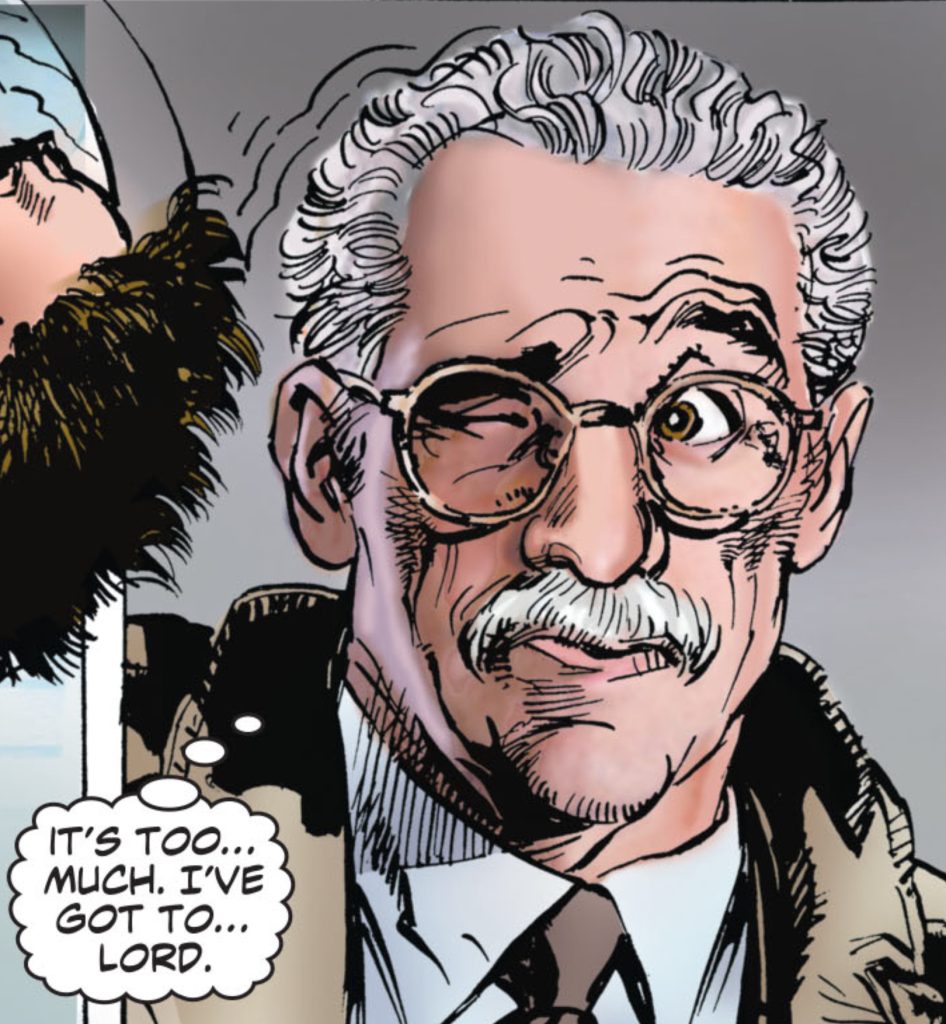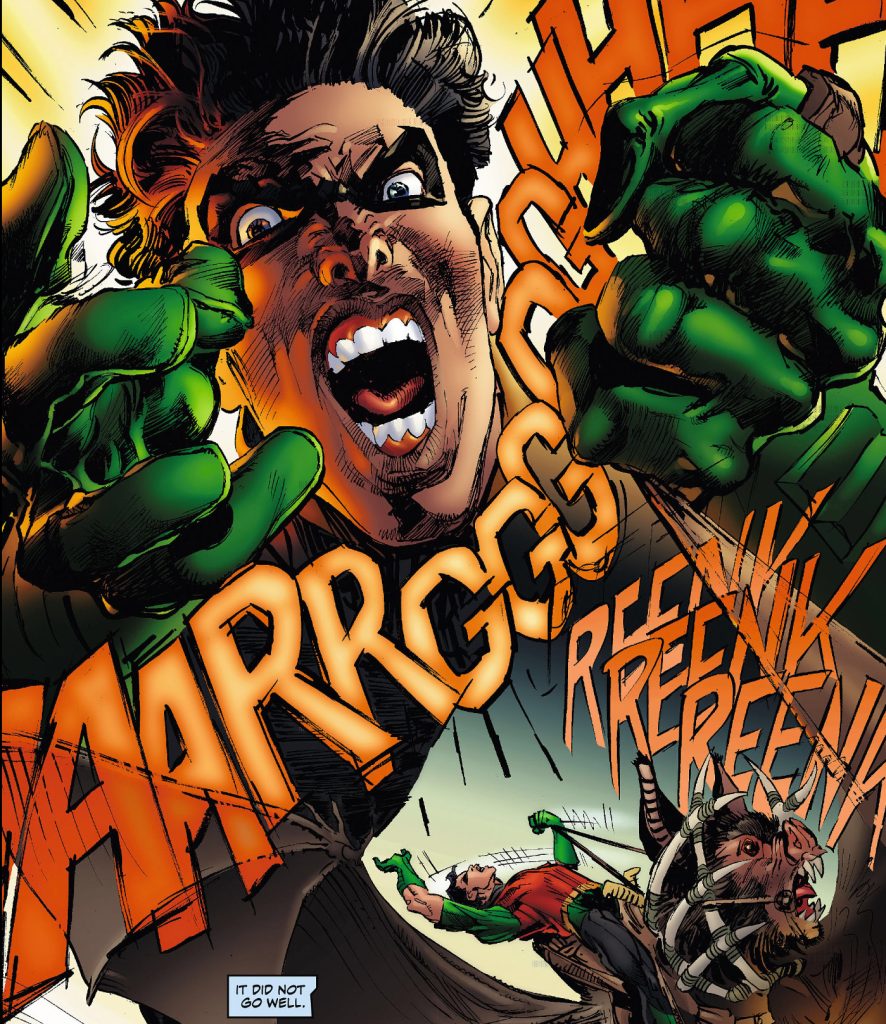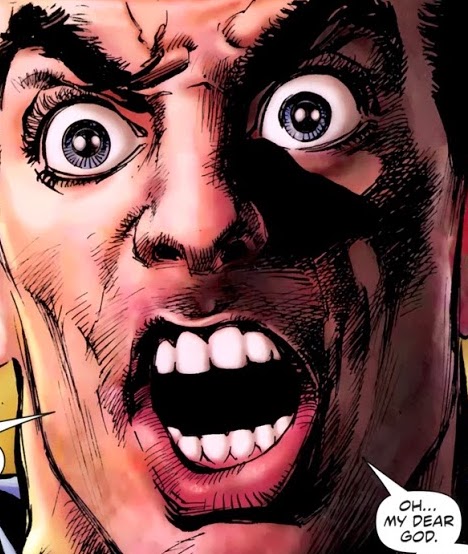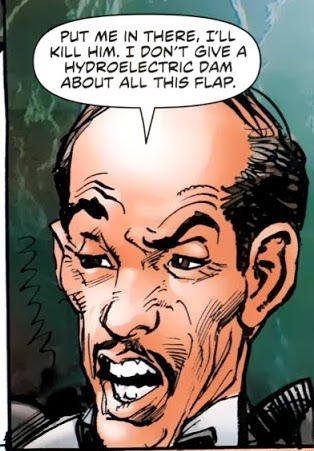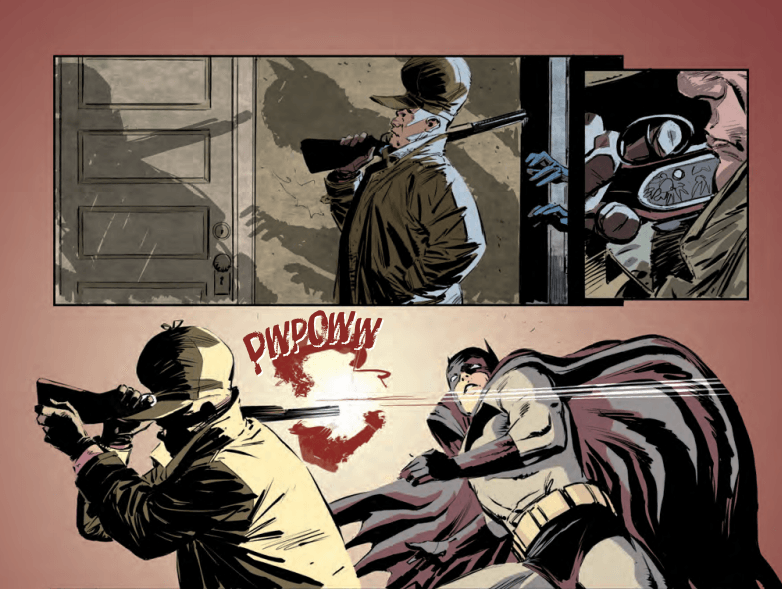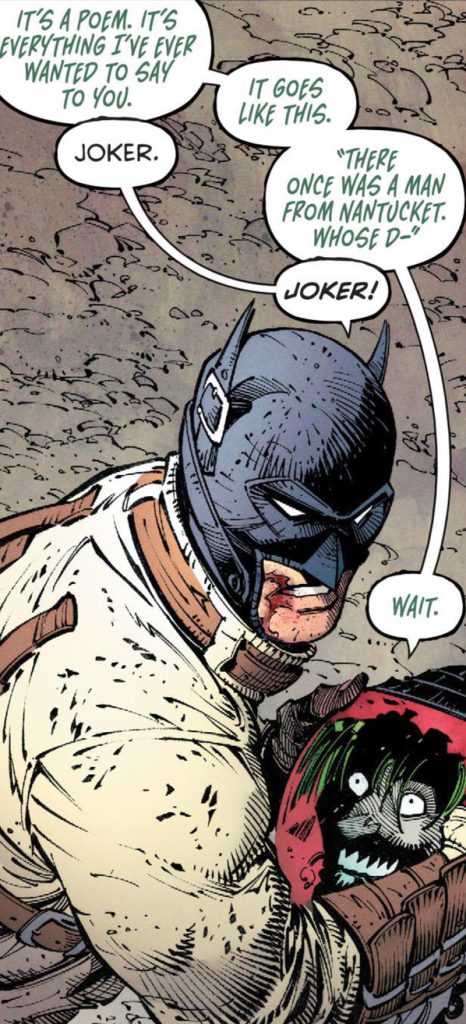That time Batman and Superman bonded over watching space-slug-screwing
“Somehow” Superman senses Batman needs a shoulder to cry on, so he flies his buddy off to the Fortress of Solitude, where Batman’s kind enough not to mention that Superman totally ripped off the life-sized dinosaur from the Batcave.
And then some meteors land outside that turn out to be spaceships controlled by weird, tentacle-covered slug things that promptly attack Superman and Batman with Supes’ collection of exotic weapons. But it turns out the slugs are actually there to collect emotions. There’s never any explanation for the fight scene except that this story needed some action.
That time the Joker became an ambassador to the UN
Ayatollah Khomeini appointing the Joker to the United Nations is still the weirdest part of A Death in the Family, but let’s not forget that comic book fans called in to demand the death of a child, which probably says some disturbing things about them we don’t have time to get into at the moment. The dark and tangled world of geopolitics gets treated with all taste and subtlety you’d expect, but at least Jim Starlin gives readers fair warning in time to jump ship by opening the first issue in a “kiddie porn warehouse.” What does that even mean? Just piles and piles of VHS tapes?
Starlin scored Jim Aparo, widely considered one of the great Batman artists of all time for this one, but Aparo seems more interested in completing the Joker’s transformation into Mac Tonight.
That time a comics legend drove Batman straight off the rails
This section could have been about either All-Star Batman and Robin the Boy Wonder, or The Dark Knight Strikes Again. But then I sat down to read Strikes Again and discovered it was actually…good? Yes, Miller’s art has deteriorated badly — half of it looks like left-handed doodles, to the point the caricatures of TV personalities are just plain unrecognizable — and Lynn Varley’s colors are eye-searing and it’s all kind of fashy and horny-on-main-y just like everything Miller’s written this millennium. But when Miller cares enough, he still turns in some pretty awesome art with his reinvention of the classic characters, and it moves at a pretty thrilling pace. Everything most people hate about the book comes from Miller cutting loose his unfiltered id, which ended up being more enticing than repellent. It’s trash, but it’s such gonzo, deeply individual trash I can’t hate it.
Anyway, all the really fucked-up shit — Superman and Wonder Woman’s skyfucking causing countless thousands of deaths, Green Lantern doing even worse when he literally holds the whole world in his hands just to scare Luthor shitless, Superman all but declaring himself God and Miller treating this like a happy ending — has nothing to do with Batman, who’s practically a supporting character in his own book.
Meanwhile, I haven’t got a single nice thing to say about All-Star Batman and Blah Blah Blah. It and All-Star Superman were supposed to launch a line of out-of-continuity series to compete with Marvel’s Ultimate Universe, and it wouldn’t surprise me a bit if the widespread disgust at Miller’s story, not to mention Jim Lee’s inability to meet a deadline, killed the project in the crib. You have to appreciate the symmetry, though. Is there any better Goofus and Gallant example of how to capture the essence of a beloved hero than All-Star Superman and All-Star Batman and Yada Yada Yada?
All-Star did nothing to shake the persistent criticism that Miller could only write women as sex objects since the first one to appear in the series, Vicki Vale, is introduced in lacy lingerie fantasizing about Superman’s super-schlong. And then we get a panel of almost nothing but butt. (Later, we get a shot of her in a hospital gown that’s somehow just as form-fitting.) Then again, we could also interpret that as Lee mooning the reader, since “All-Star” feels like one long, 10-issue insult. Miller turns Batman into a dangerous, unstable fascist and the other heroes into clowns. True, fans ate that up in The Dark Knight Returns but that book didn’t have him beating and starving a child or Wonder Woman slurring a random man as “sperm bank” then turning around and denigrating the rest of the Justice League for not being manly enough.
The series also includes Black Canary for whatever reason, and in this version, her costume comes from her gig at some kind of low-rent Hooters and she decides to quit and fight crime after one too many skeevy comments from the clientele — which is pretty rich given how Miller and Lee all but drool all over every woman on the page.
Miller seems to have even forgotten basic math — as video reviewer Linkara pointed out, one scene transitions from Batman driving Dick Grayson, who, as Miller never tires of reminding us, is “age 12,” home to Clark Kent seeing Dick’s face on a milk carton “fifteen hours earlier,” which would mean Batman’s been driving in circles all night and most of the day, and that’s not even accounting for the time it would take to get that milk carton printed and on Clark’s breakfast table.
“All-Star” wasn’t sold as a mature readers title. This leads to bizarre incongruities like a scene of the Joker murdering a woman in bed while insisting “this is love” and narrating the whole process in sickening detail and implying the cops Batman rescues Dick from intend to rape him next to pages where all the cuss words are blacked out. Fortunately, Lee at least had the restraint not to illustrate Bruce’s memory of his parent’s murder: “I touched my mother’s breast. It bled on me.”
Apparently, DC couldn’t be fooled three times, and they rejected Miller’s next Batman pitch, Holy Terror, Batman! Legendary Studios eventually released it as simply Holy Terror — and really, without the Burt Ward reference, what’s even the point? — as their big entry into the comics world. All that did was vindicate DC since, by all accounts, the book was so Islamophobic it’d make your average Medieval Crusader blush.
That time a different comics legend drove Batman straight off the rails
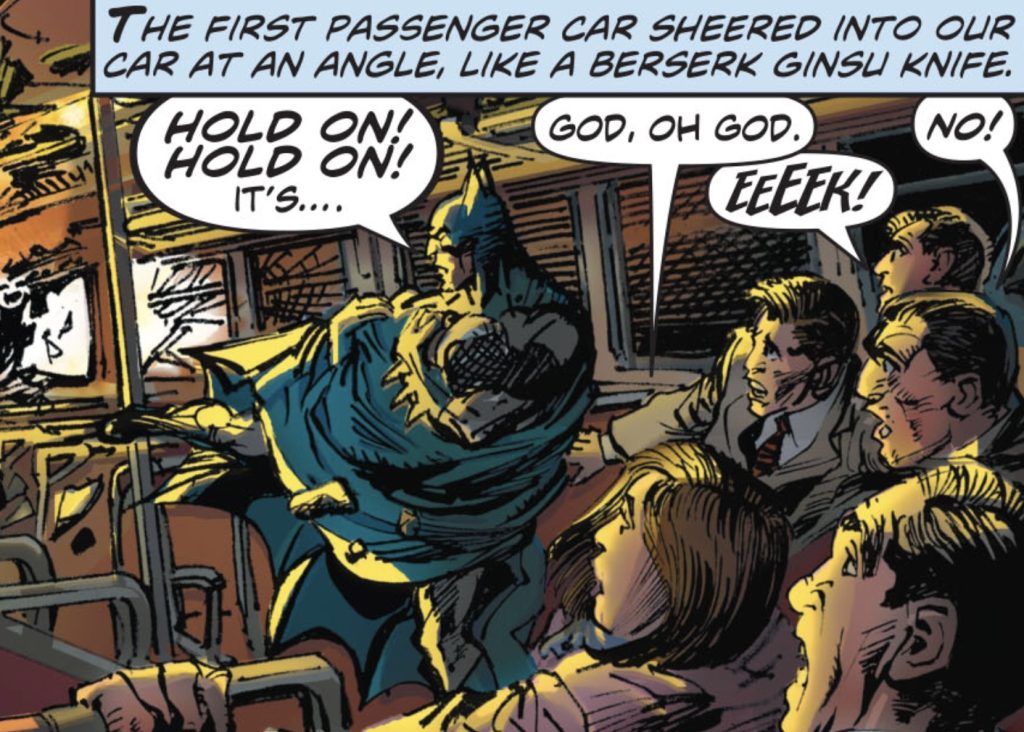
Neal Adams’ Batman: Odyssey was so jam-packed with inexplicability and incomprehensibility I ended up writing a whole article on it. And I still couldn’t cover everything. And when I’m done here, I still won’t have. He mentions in an interview that Frank Miller helped him get the job, which brings things full circle pretty nicely.
I mentioned the characters refer to a tribe of underground dwellers as “trolls” and “gnomes” interchangeably even though gnomes appear a later as a whole separate species. Even more confusingly, they’re too small to hide in anyone’s garden — in fact, they’re a lot bigger than the tradtionally giant trolls.
The central conflict of the story — the villainous Sensei (who we’re supposed to believe is a martial arts master even though he wears a white belt the whole time) kidnapping Batman’s sometimes-lover Talia al Ghul and Cave-Batman (we’ll get to that)’s wife Tatsinda — is described over and over again, but never shown.
Up until the plot finally decides to poke its head in (and in what appears to be the last issue, no less), Neal Adams fills the first six issues with random events including yet another flashback to Batman’s first case (how many “first cases” does he have by now?), revelations of conspiracies to use Batman’s rogues’ gallery of “clowns” to distract him from serious crimes, to kill Robin’s parents as an initiation ceremony into the League of Assassins, and dealings between Thomas Wayne and Ra’s al Ghul.
Aquaman’s sudden appearance is confusing enough, but then Adams decided to totally overhaul the hero’s design, adding giant fins to his ankles and wrists and fin-shaped shoulder pads that frequently look more like buzzsaws, and giving the king of the sea an impressive perm.
And that’s before Batman leaps aboard a T. Rex with this memorable internal monologue: “I don’t like this. I don’t like this. I don’t like this. I don’t like this! I don’t like it. I really don’t like it. I love it!”
Some of Adams’ statements on the “expanding earth” theory he promotes in the book are unintentionally revealing. For instance: “I could teach you everything you need to know about physics in a term.”
Looper’s one-image-per-paragraph format also meant I couldn’t celebrate one of the best things about Odyssey: the greatest collection of facial expressions in comics history.
Also, Alfred offers to end the whole plot by cold shooting the bad guy in the face (assuming that’s what any of this gibberish means.)
That time Batman created a backup personality to fight his dad
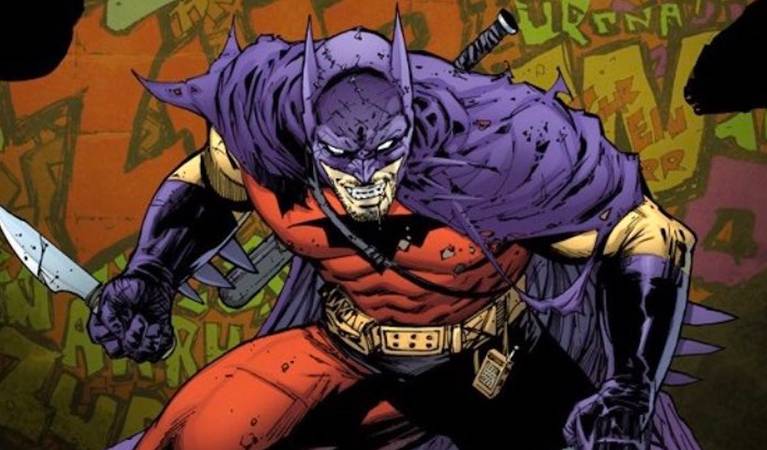
Of all people, of course it would be Grant Morrison who brought most of these stories back into continuity. Sure, they were there as part of a “Black Casebook” of cases not even Batman can explain and probably hallucinated to begin with, but it’s the thought that counts.
The original “Batman of Zurr-en-Arrh” story is weird enough in its own right. For one thing, Batman confuses “invisible” with “invincible” when an invading robot army disappears, apparently forgetting he has four other senses and should have a pretty good idea where the robot is given it’s holding onto him. The low gravity of Zurr-en-Arrh gives Batman super strength, which he uses to play “super golf” with an invading army’s fireballs.
In Morrison’s version, Simon Hurt pumps Batman full of drugs and dumps him on the curb, where he stitches the “Zurr-en-Arrh” costume out of rags he found on the street, and let’s be honest, isn’t that what the Dick Sprang’s original costume looked like anyway? He’s accompanied by another weirdo relic of the Silver Age, Bat-Mite, once his dangerously all-powerful fifth-dimensional fanboy, now “Might,” “the last fading echo of the voice of reason.” The bad guys quickly learn that unleashing an even battier Batman without any of the regular version’s qualms about bone-shattering violence (committed with a baseball bat, of course) wasn’t such a good idea.
That time Batman fought Elmer Fudd — and almost lost
Tom King all but confirmed this story was in continuity by sending Batman on frequent return visits to the bar, Porky’s, where so much of it takes place. He even reteamed with artist Lee Weeks for a spiritual sequel. It’s a near-silent, issue-long chase scene right out of a Road Runner cartoon, and even though Batman’s masked quarry eventually reveals himself as the Joker, his purple hat and constant beeping of a bike horn, not to mention that Batman’s after him for the murder of a man named William Edward Coyote, make the reference clear.
Elmer holds his own against Batman surprisingly well, and in the main story, the Dark Knight loses whatever’s left of his dignity. Just as the main story dropped Bugs and Elmer into Batman’s world, the backup drops Batman into theirs, taking Daffy Duck’s role in the classic “Duck season/rabbit season” plot. King’s trademark repetitive dialogue serves him well here, with Elmer pronouncing it “bat season” every time he blasts Batman in the face. At one point, the Dark Knight breaks “Calendar Man! Master of the calendar!” out of Arkham to prove it’s rabbit season, and after a panel, just for him to head for the hills shouting “I’m free! I’m free!” Batman may be the World’s Greatest Detective, but no one outsmarts Bugs Bunny.
That time Batman wandered the wasteland with the Joker’s severed head
Last Knight on Earth was the grand finale to Scott Snyder and Greg Capullo’s decade-long collaboration on Batman. The two creators’ vision of a DC Universe destroyed by the conflict between Justice and Doom treads a lot of familiar ground after the previous year’s Dark Nights: Death Metal (previously featured in The Weirdest Justice League Stories). But the duo still had a lot of gas left in that particular tank. For instance, “God is dead” may have been a major bombshell for Nietzche (or, if you’re feeling less highbrow, “His Dark Materials”), but “Last Knight” is so breathlessly paced it only rates an offhand mention from Wonder Woman that “the fighting consumed heaven and hell.”
There’s also a subplot introducing another possible final case for the Dark Knight. Finding the corpse of a child rigged with explosives on the corner where his parents died pulls on a thread that eventually leads back to Joe Chill. Batman discovers his parents’ death wasn’t a random mugging but a calculated act of revenge on Dr. Thomas Wayne for losing Chill’s son on the operating table.

